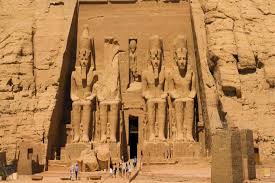The Nile’s Seven-Year Stop and the King Zoser Era

The Seven-Year Stop of the Nile River is one of the most intriguing and mysterious events in ancient Egyptian history. This remarkable occurrence is believed to have happened during the reign of King Zoser, the second pharaoh of Egypt’s Third Dynasty, around 4,600 years ago. The exact reasons for the Nile’s cessation remain unclear, but it was a deeply significant event in the minds of the ancient Egyptians, whose entire civilization was intricately connected to the river.
The Nile’s Life-Giving Role
The Nile River was regarded as the lifeblood of ancient Egypt. Its annual flooding was crucial for fertilizing the land, providing water for crops, and sustaining agriculture, which formed the backbone of Egypt’s economy. Without the regular inundation of the Nile, agricultural production would have been disrupted, leading to widespread famine and hardship. The interruption of the Nile’s flow for seven years would have had catastrophic consequences, impacting everything from food supplies to the very fabric of Egyptian society.
The Granitic Stone of Suheil Island
The ancient Egyptians recorded this extraordinary event on a granite stone found on Suheil Island, located in the southern part of Egypt near Aswan. The stone, often referred to as the “Nile Stone” or “Famine Stele,” offers insights into the perceived causes and consequences of the Nile’s disruption. According to the inscription, the Nile ceased to flood for a prolonged period, leading to a catastrophic famine. The stone also records how the Egyptians turned to their gods for salvation, seeking divine intervention to restore the river’s flow.
The people of Egypt believed that the cessation of the Nile was a sign of divine anger, potentially a punishment for their failure to honor the gods. To appease the gods, sacrifices and offerings were made. The stone serves as a testament to the people’s deep connection to their religion and the pivotal role that divine favor played in their survival.
King Zoser and the Step Pyramid
King Zoser, the ruler during this tumultuous time, is best remembered for his monumental achievements, particularly the construction of the Step Pyramid at Saqqara. The Step Pyramid, designed by the architect Imhotep, was the first major stone structure in Egypt and marks a significant leap in architectural development. The construction of this pyramid was part of Zoser’s efforts to solidify his legacy and demonstrate his divine right to rule. The pyramid itself was a symbol of both power and eternity, a reflection of the king’s belief in the afterlife.
During the time of the Nile’s interruption, King Zoser would have faced immense pressure to restore order and maintain stability. It is believed that Zoser’s construction of the pyramid and his efforts to appease the gods were part of a larger strategy to reassert divine favor and ensure the Nile’s return to its natural course. The pyramid itself may have been a form of offering or a symbolic gesture to the gods, reinforcing the king’s role as an intermediary between the divine and the earthly realm.

The Divine and Natural Significance
The seven-year stoppage of the Nile’s flow was not only a natural disaster but also a deeply spiritual and religious event. The Egyptians saw the Nile as the manifestation of the gods’ will, and any interruption in its cycle was interpreted as a sign of divine displeasure. The people believed that the gods controlled the forces of nature, and that human actions—whether positive or negative—could influence these forces. The king, as a divine ruler, was seen as responsible for maintaining harmony between the gods and the natural world. If the Nile stopped flowing, it suggested that the king had failed in some way, and he would have to take decisive action to rectify the situation.
Impact on Egyptian Society
The seven-year stop of the Nile would have had lasting effects on the social, economic, and political structure of ancient Egypt. With famine and hardship threatening the population, the king’s ability to provide for his people and restore the Nile’s flow was of utmost importance. The interruption would have also affected the pharaoh’s political stability, as rulers in ancient Egypt were often judged by their ability to maintain the prosperity of the land and its people. The gods were believed to directly influence a ruler’s success, and an event like the Nile’s stoppage would have tested the king’s strength and legitimacy.
In response, King Zoser and his court would have likely made a series of public displays of repentance, including religious rituals and offerings, to restore divine favor and end the famine. The construction of monumental architecture, such as the Step Pyramid, was likely seen as part of this larger effort to appease the gods and restore Egypt to its former glory.
Conclusion
The seven-year stoppage of the Nile River during King Zoser’s reign was a pivotal moment in Egypt’s ancient history. It is a testament to the complex relationship between the Egyptian people, their kings, and their gods. The event reflects not only the importance of the Nile in the survival of the civilization but also the Egyptians’ belief that the gods controlled all aspects of life. The granite stone on Suheil Island and the construction of the Step Pyramid stand as lasting symbols of a civilization that understood the delicate balance between the natural and the divine, and the extraordinary lengths to which they would go to restore harmony between the two.